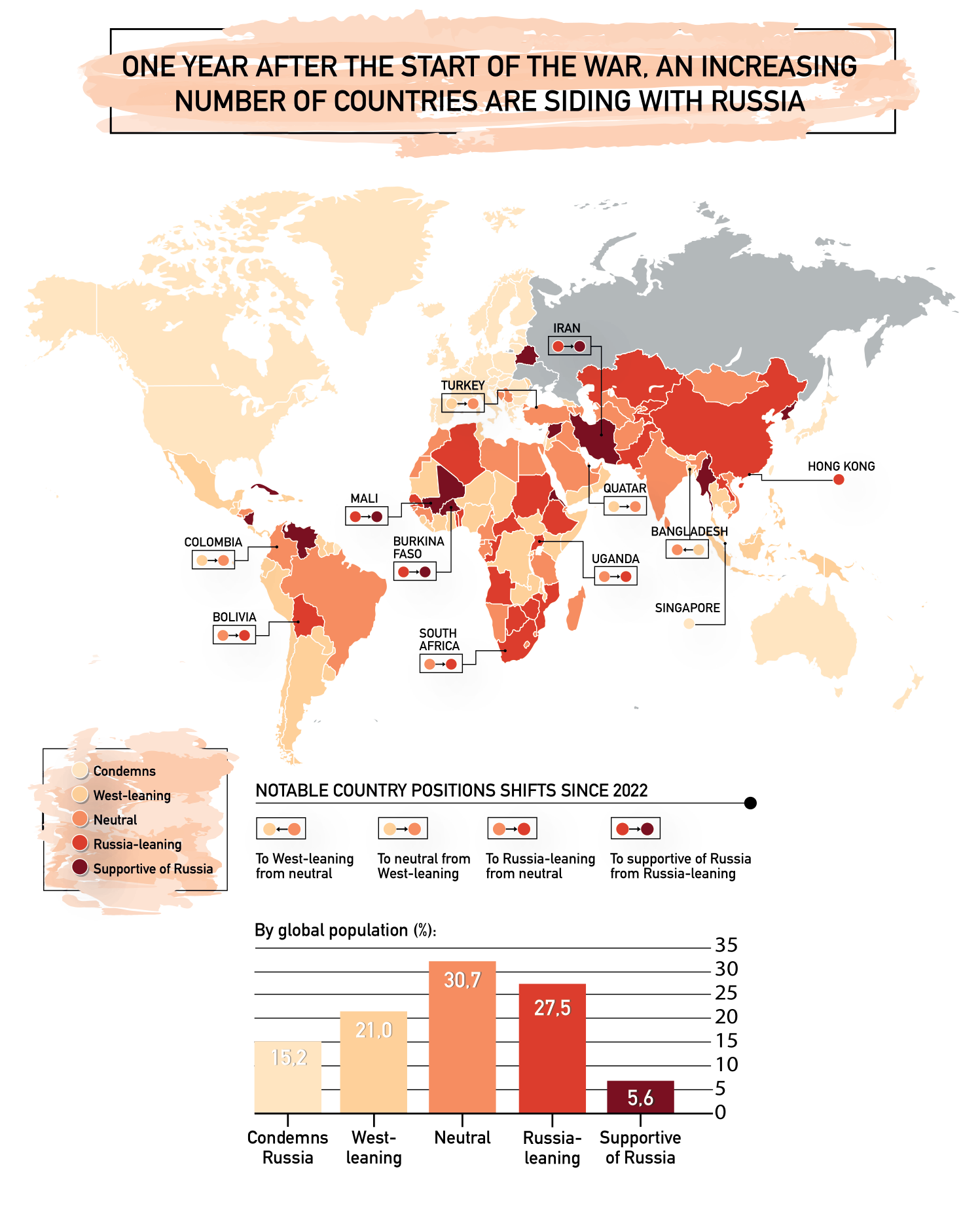
Every time has its geopolitical imaginings, and the Rift is the one that most captured our imagination. In this view, the political world subdivides into liberal freedom and authoritarianism; or, in the counter framing, Western hegemony and civilisational challengers.
The diverging international responses to the Russo-Ukrainian War bring the Rift to the fore, regardless of Biden’s rhetorical insistence that “The world stands with Ukraine.” A European Council on Foreign Relations (ECFR) report on attitudes toward the War finds a “United West, divided from the rest.” Based on polls from fifteen countries, the report concludes that Westerners largely agree that the West “should help Ukraine win.” In contrast, “citizens in China, India, and Türkiye prefer a quick end to the war even if Ukraine has to concede territory.”
But this general conclusion, which comes from the report’s introduction, is not supported by the underlying data. The data shows, for example, that 23 per cent of Chinese respondents believed Ukraine should keep fighting. These respondents agreed that “Ukraine needs to regain all of its territory even if it means a longer war.” This statement got 34 per cent approval among American respondents, meaning that Americans are only slightly more likely to be pro-Ukraine ‘hawks.’ A striking find, given that the Chinese and US governments play very different roles in the conflict; albeit one that should be treated with caution, as the report does not specify how it sampled in China.

That said, people’s private opinions tend to be more dispersed than the position-takings of governments and public commentators. The Rift is much more real in the high realm of politics and commentary than in ordinary people’s everyday lives.
Yet, in high politics, too, there are misgivings about the Rift image. The Chinese government protests the “Cold War mentality” that informs it. In his February 21-essay on the Chinese news site Guancha, diplomat and geopolitical analyst Zhou Bo argues that it is unfair that Western rhetoric lumps China together with Russia in a club of “authoritarian revisionist countries” (专制的修正主义国家). Zhou, a delegate for China at the 2023 Munich Security Conference, explains that China is different. “The attitude of Russia and China toward the world order diverge: Russia is ‘nostalgic’ and resistant to globalisation and the world order, but China is not. China is a defender (捍卫者), not a destroyer (破坏者), of the world order.”
However, while Zhou plead for peace, the US warned about Sino-Russian arm sales, releasing its intelligence via the German magazine Der Spiegel. Reportedly, Bingo, a Xi’an-based aviation company, is trying to export 100 strike drones to Russia. The New York Times headlined: “US Warnings to China on Arms Aid for Russia’s War Portend Global Rift.”
So how real is the Rift? As real as we make it. Vital are the actions of political and intellectual leaders, who can throw ropes to the other side and pull the world together—or do the opposite. May the bridge builders out-build the bridge burners.
The author is a Dutch sociologist, senior fellow at the Danube Institute, and former Peking University postdoc. He studies theories of world order.